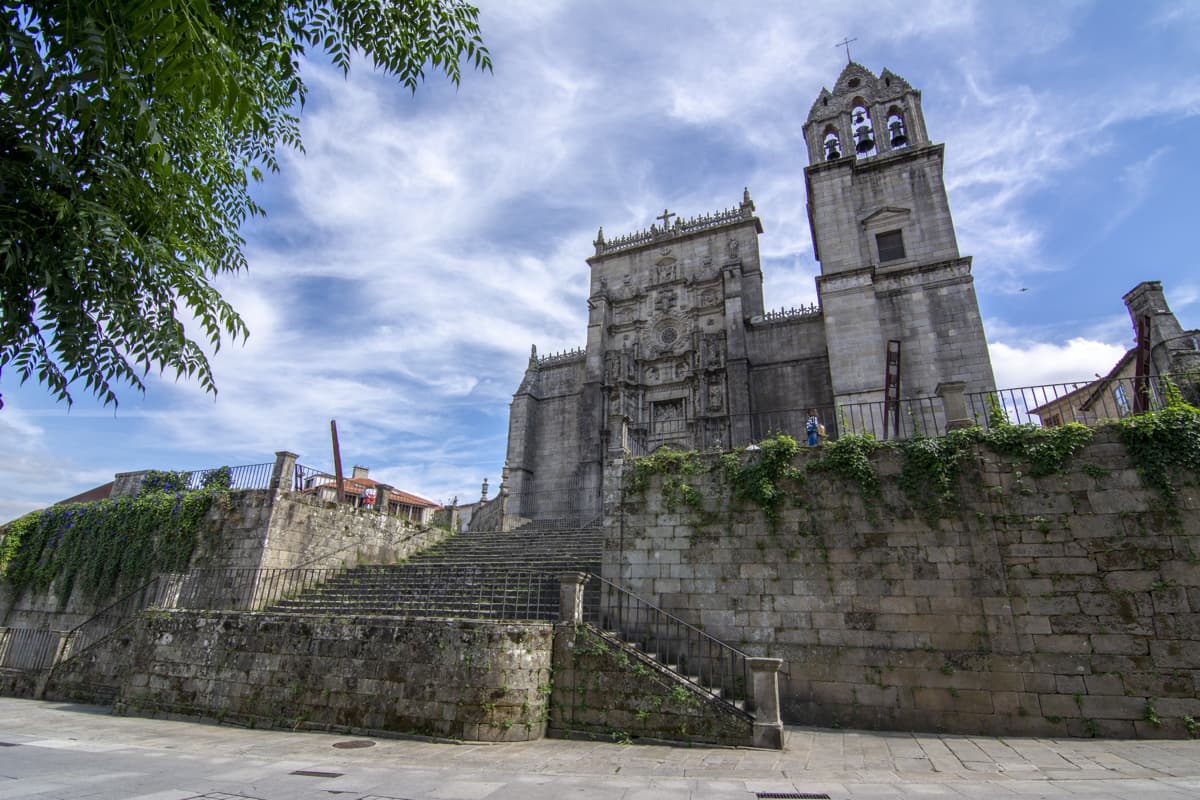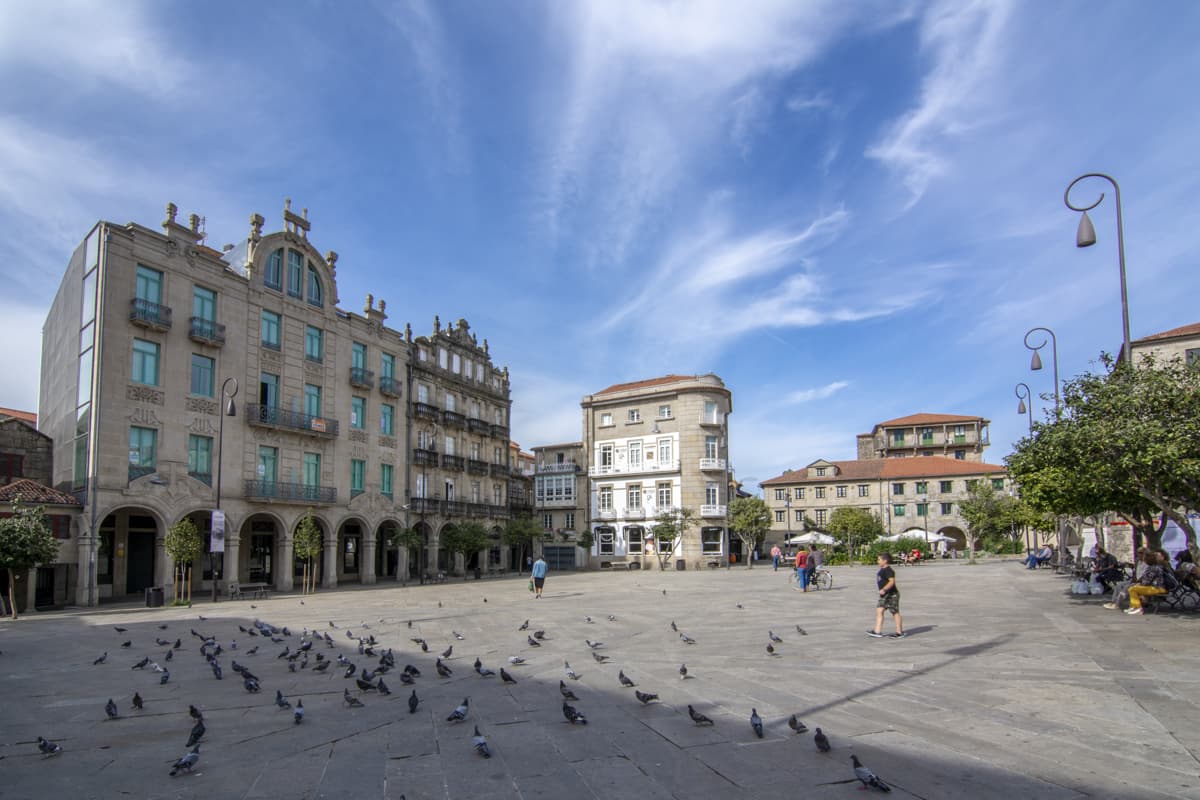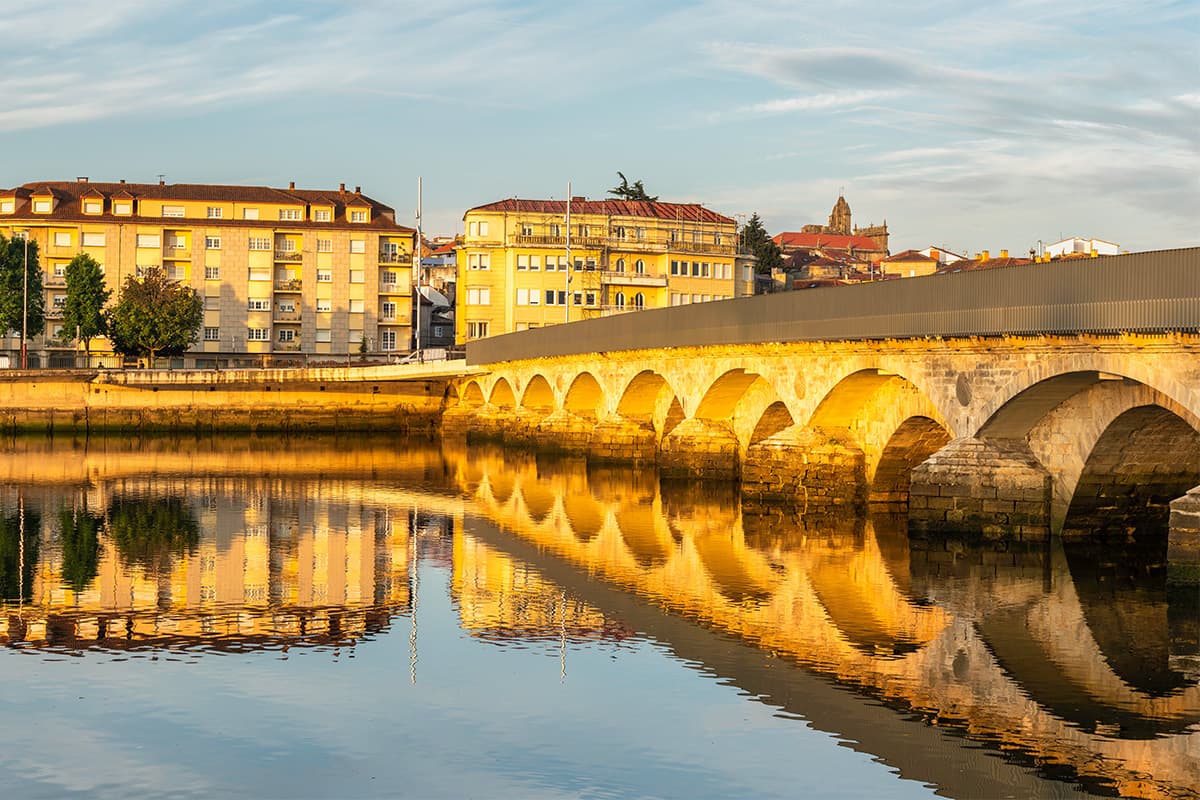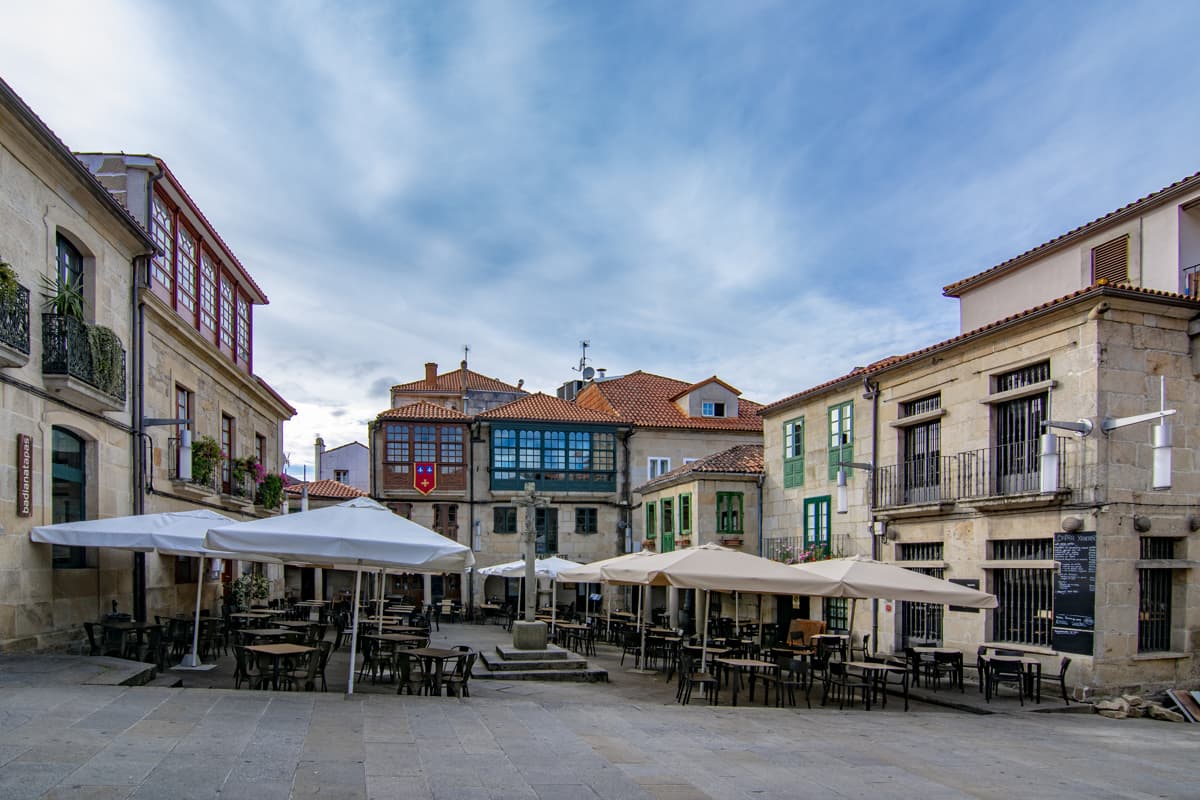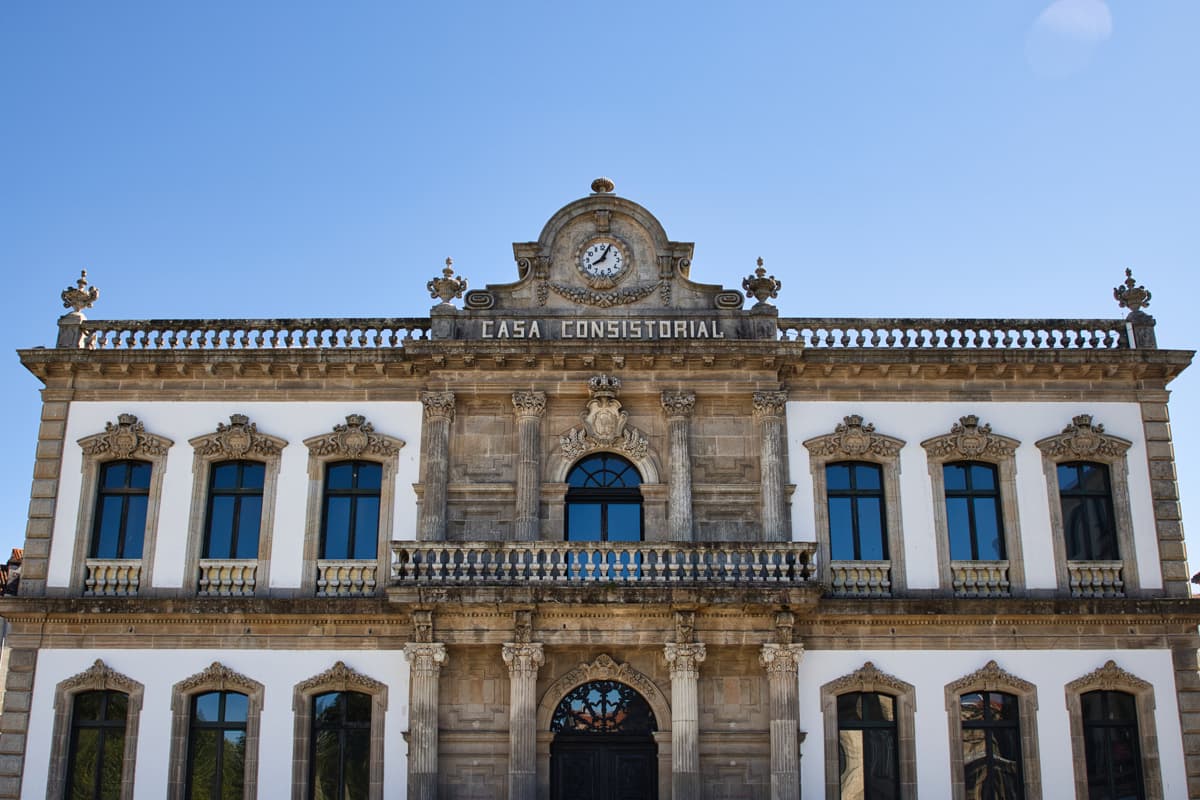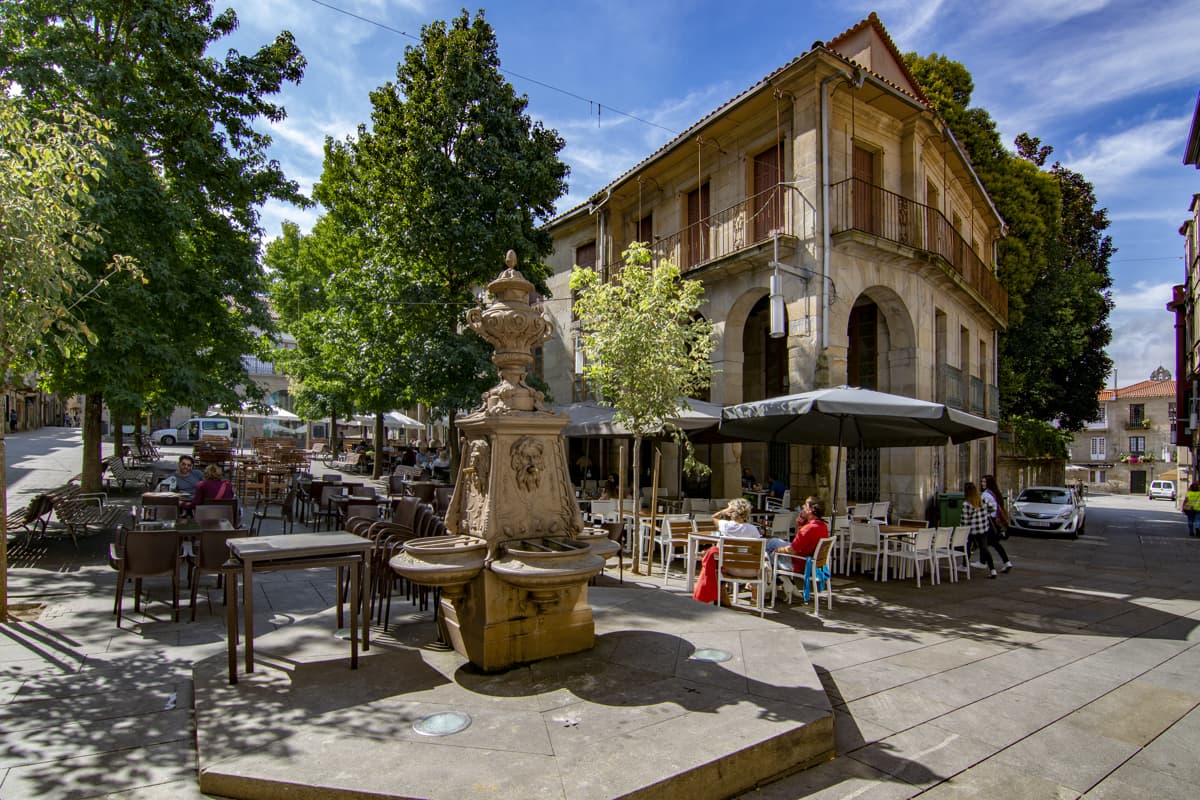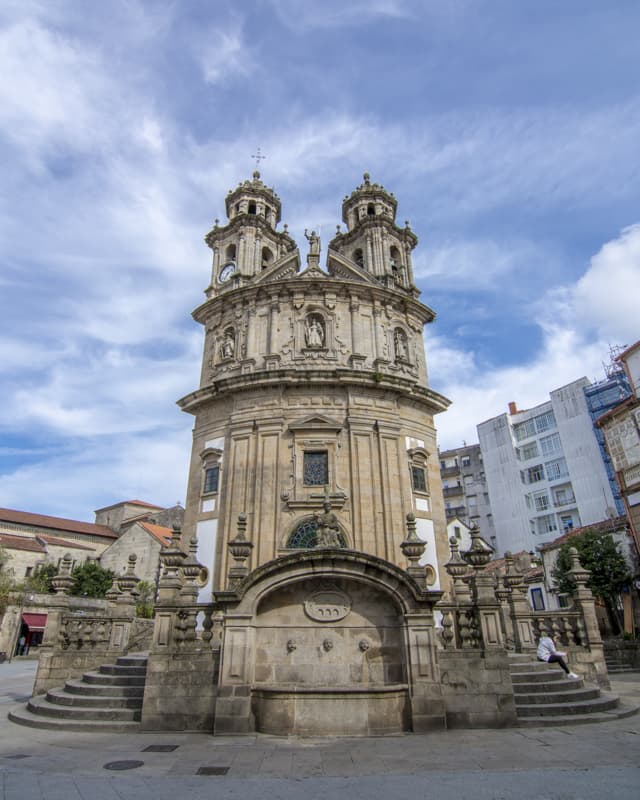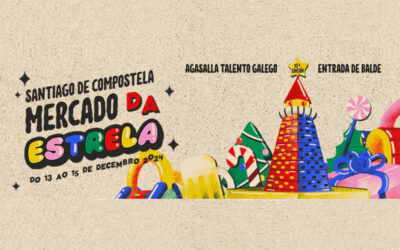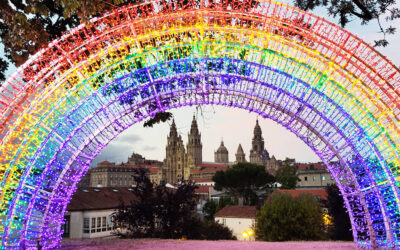visit
pontevedra
This charming city, located on the banks of the Lérez River, has a rich history, culture and landscapes that are worth visiting.
Pontevedra, the capital of the rías baixas
Pontevedra, also known as the ‘Boa Vila‘, is a hidden treasure along the routes of the
Portuguese Way
either on the coast or inland. It is the capital of the province of Pontevedra and is located on the estuary with which it shares its name, in the last bend of the Lérez River.
The city offers tourists and pilgrims a unique opportunity to explore its historic center and discover why it is a global symbol of urban sustainability. Its rich and varied history is intertwined with its privileged location and its historical legacy, which takes us from its Roman origins to its splendor as a fishing and commercial port.
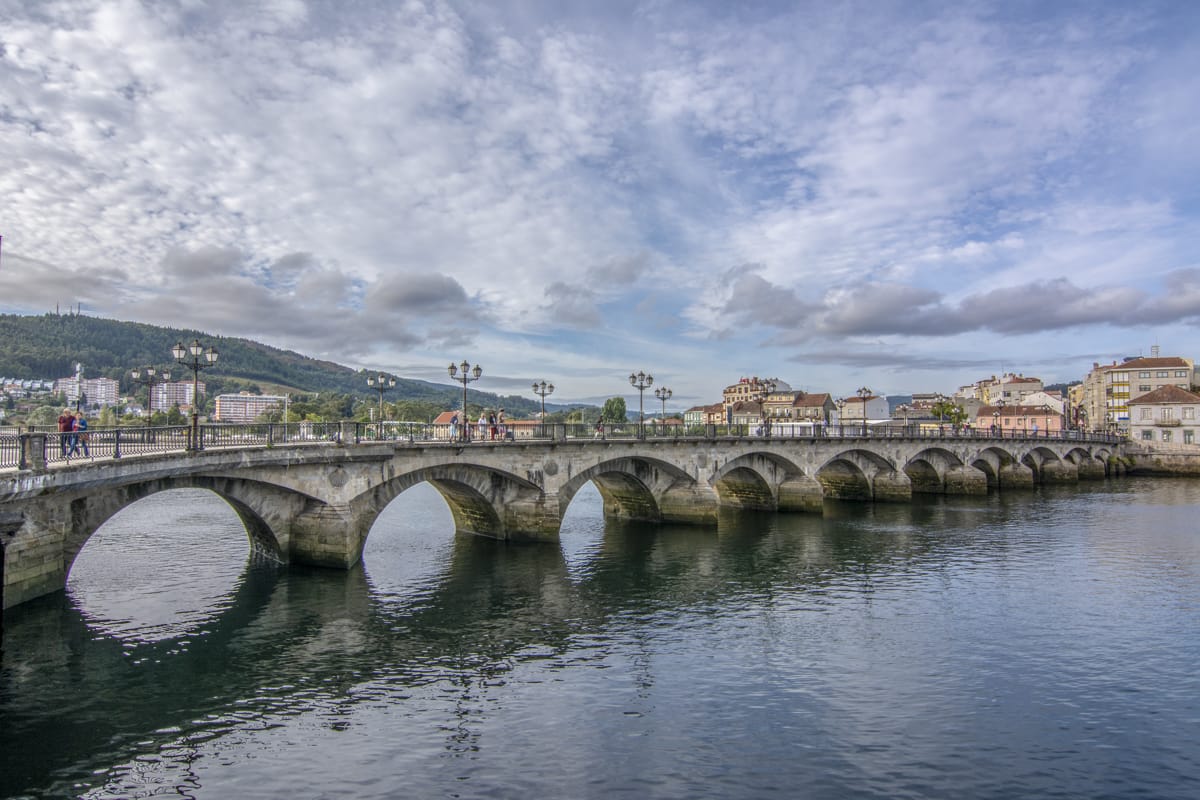
A glimpse of its history
The first traces of human settlements in Pontevedra date back to Roman times. It is believed that the city was originally called Duos Pontes, referring to the Roman bridge that crossed the river and connected the cities of Braga and Lugo by road. According to legend, it was founded by Teucro of Troy, hero of the Iliad.
Its first records date back to 1169, when King Fernando II granted it forums. During this period, the old Roman bridge, now known as the O Burgo Bridge, was rebuilt, and important road construction and maintenance works were carried out due to the growth of the city.
The period of Pontevedra’s greatest splendor came during the reign of Henry IV,when the city walls were enlarged and the so-called Free Trade Fair,, a medieval fair that continues to be held today during the first weekend of September and which, in its day, lasted 60 days.
During the XIV, XV and XVI centuries, Pontevedra became the most important port in Galicia, thanks to the influence of the Guild of seafarers. This gave it a distinctive bourgeois and commercial character.
For this reason, its economy was based on fishing, especially the salting and commercialization of sardines. In fact, the influence of the Seafarers’ Guild was such that they financed the construction of the Basilica of Santa Maria, patron saint of sailors.
However, Pontevedra’s wealth and its accessibility by land and sea made it the target of attacks and plundering throughout history, from Norman, Danish and French raids to Turkish and Barbary pirates.
The seventeenth and eighteenth centuries marked a period of decline for Pontevedra, due to the decrease in sardine stocks, the occupation of the estuary and the emigration of the nobility. It was not until 1833, when Pontevedra became the municipal capital, that it began to recover its splendor thanks to its new administrative functions.
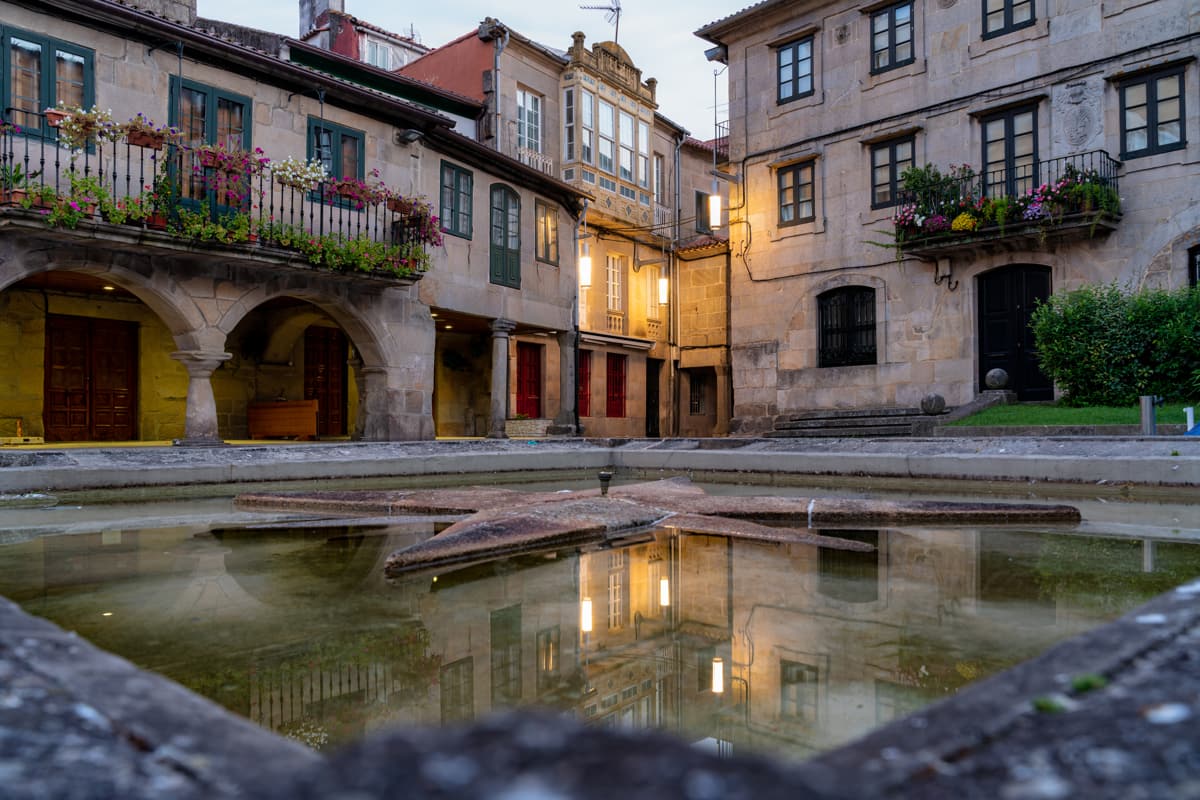
committed to sustainability and pedestrians
One of the highlights of Pontevedra is its commitment to urban sustainability. Over the past two decades, the city has undergone a dramatic urban transformation that has been recognized internationally. It has received several awards for its focus on safe and sustainable mobility, quality of urban life and accessibility for pedestrians and people with disabilities.
The capital of Pontevedra has become an example to follow in terms of creating more friendly and sustainable urban environments and its model has inspired other cities around the world.
Pontevedra’s must-sees
The historic center of Pontevedra is a treasure that has stood the test of time and is among the best preserved in Galicia. Cobblestone streets and stone and granite facades transport visitors to a medieval past of prosperity and wealth.
One of its characteristics is that, for the most part, it is closed to traffic, which makes pedestrians the protagonists of its streets. This has contributed to a vibrant urban life and improved the city’s accessibility for visitors and residents.
Now, we have made a list of the monuments and places that you cannot miss during your visit to this city.
virxe da virxe da peregrina church
The cult of St. James took root in Pontevedra during the late Middle Ages, leaving notable traces. One of the most outstanding monuments is the Iglesia da Virxe da Peregrina, whose origin is related to an image of the Virgin brought by French pilgrims.
He was so popular that a confraternity was founded in his honor and installed in the chapel of the Virgen del Camino. However, disputes between the confraternities led to the change of the patron saint of the most recent confraternity, giving rise to the present church, built in 1794. The building is baroque in style and its ground plan is shaped like a scallop shell, a prominent symbol of St. James.
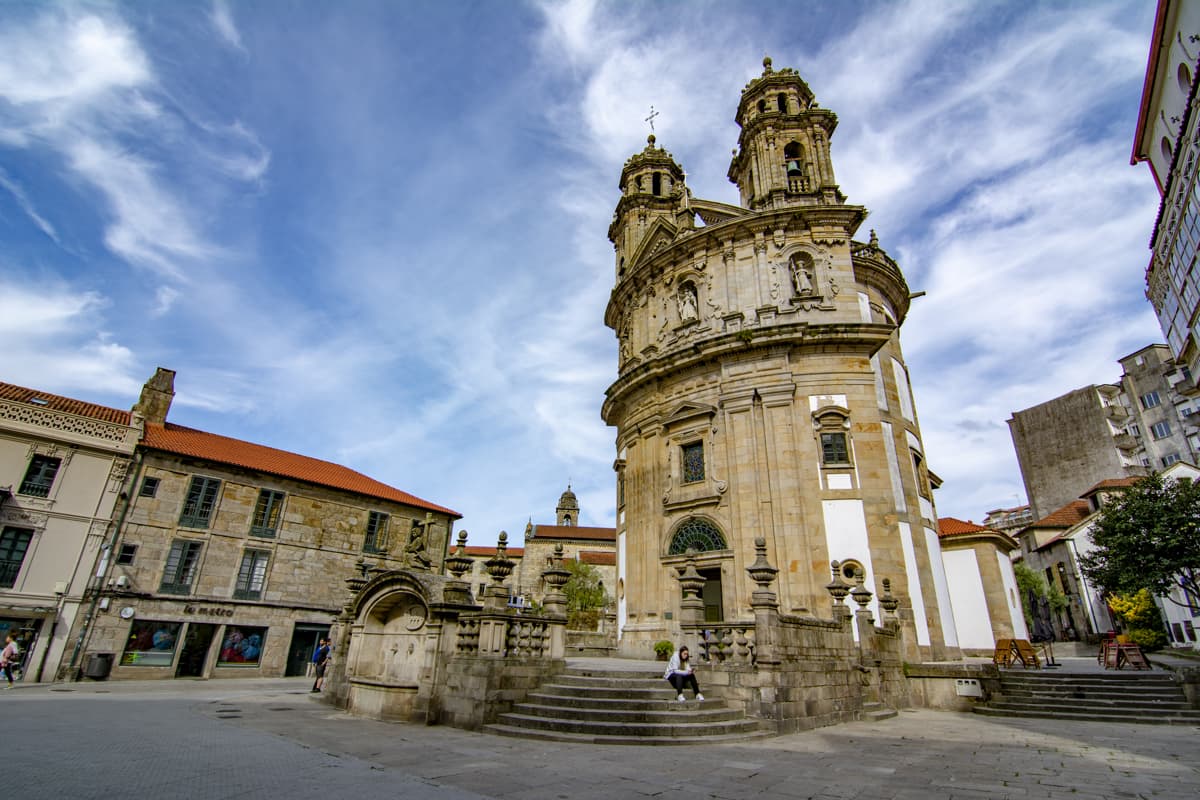
tie rod bridge
The symbol of modern Pontevedra is the well-known Puente de los Tirantes, which crosses the Lérez River. This construction was inaugurated in 1995 and was designed by engineers Leonardo Fernández Troyano and Javier Manterola. It is a concrete structure from which 17 pairs of metal strips are detached, some attached to solid ground and others on top of the structure, creating its characteristic shape.
From the Puente de los Tirantes, you can see a great view of the city, both the rest of the bridges and the Illa das Esculturas and surroundings.
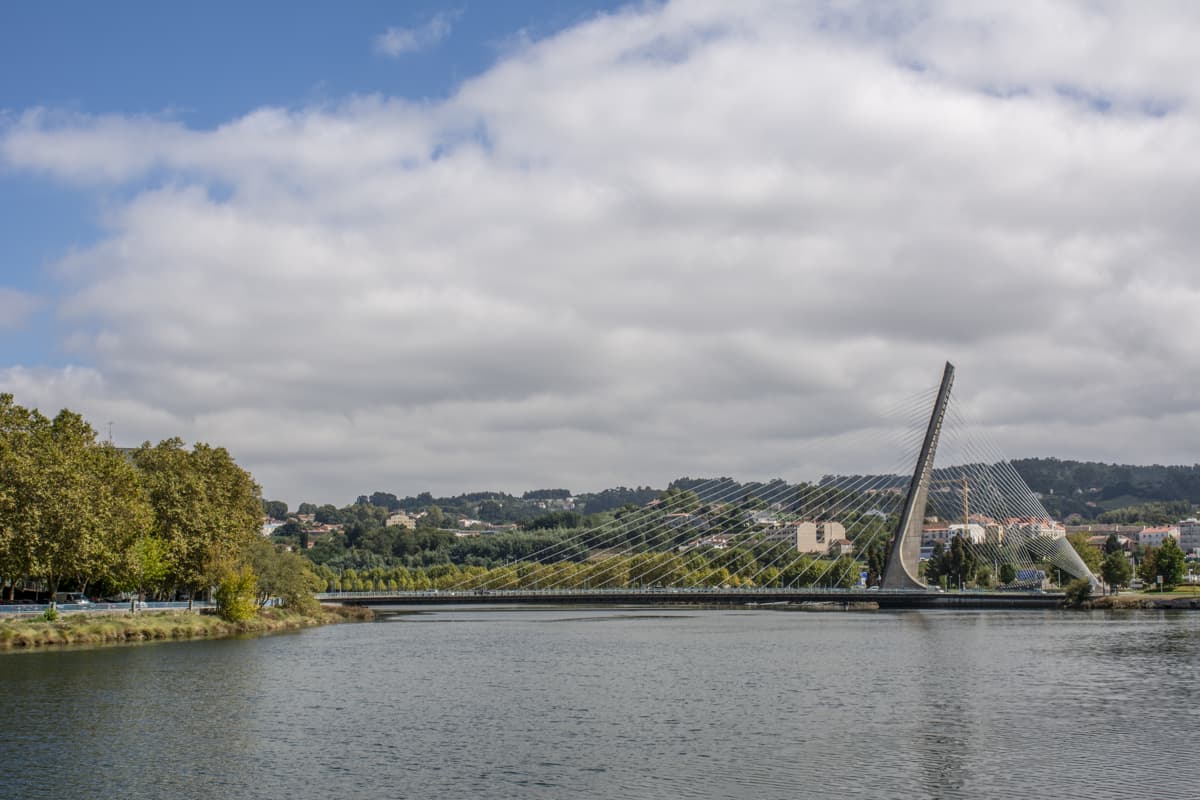
ruins of santo domingo
The Dominican order arrived in the city at the end of the 13th century and began the construction of a Gothic convent. At the end of the 18th century, the Dominicans decided to reform the church with a neoclassical nave, which would replace the old church. However, it was stopped due to the confiscations of Mendizábal in 1835, leaving this renovation unfinished and the building in a state of abandonment.
Currently, only the head of the church with five polygonal apses and a side wall with a small doorway and rose window remain from the old convent. Since 1938, the convent belongs to the Museum of Pontevedra, which decided to install a permanent exhibition of tombs of historical figures.
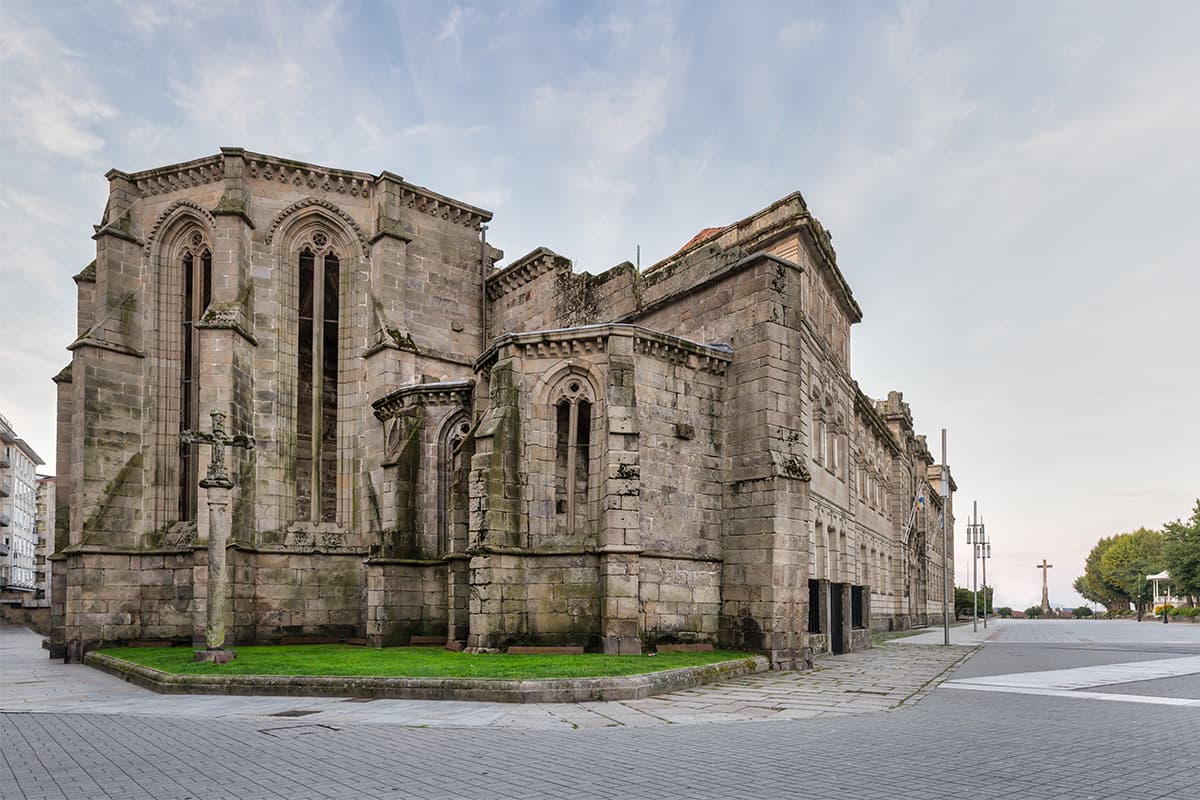
convent of san francisco
It was built between the 13th and 14th centuries, in Gothic style. Inside, several medieval tombs are preserved, such as that of the troubadour and admiral of the fleet Paio Gómez Chariño. The Convent of San Francisco suffered a fire in 1995, for which it had to be repaired and restored.

basilica of santa maria
The Basilica of Santa Maria was built by the Guild of Seafarers in the first half of the 16th century. It belongs to the late Gothic style and has a basilica plan with three naves divided by eight columns. It stands out above all for its impressive facade, full of altarpieces, figures and sculptures, such as the figure of Christopher Columbus.
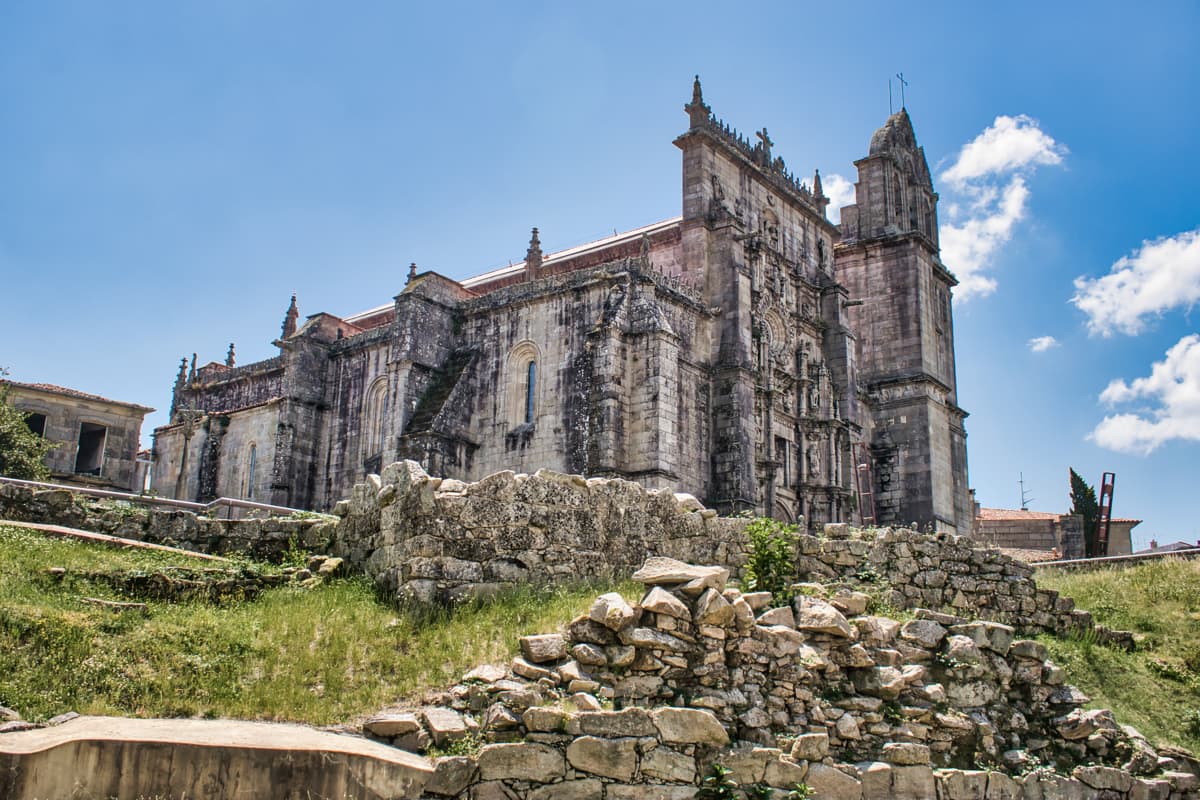
the mall
The Alameda de Pontevedra, a natural landscape in the heart of the city, is located on the land that once belonged to the orchard of the Convent of Santo Domingo. In it, there are several outstanding architectural constructions, such as the Valle Inclán High School, the Provincial Council and the Delegation of Education.
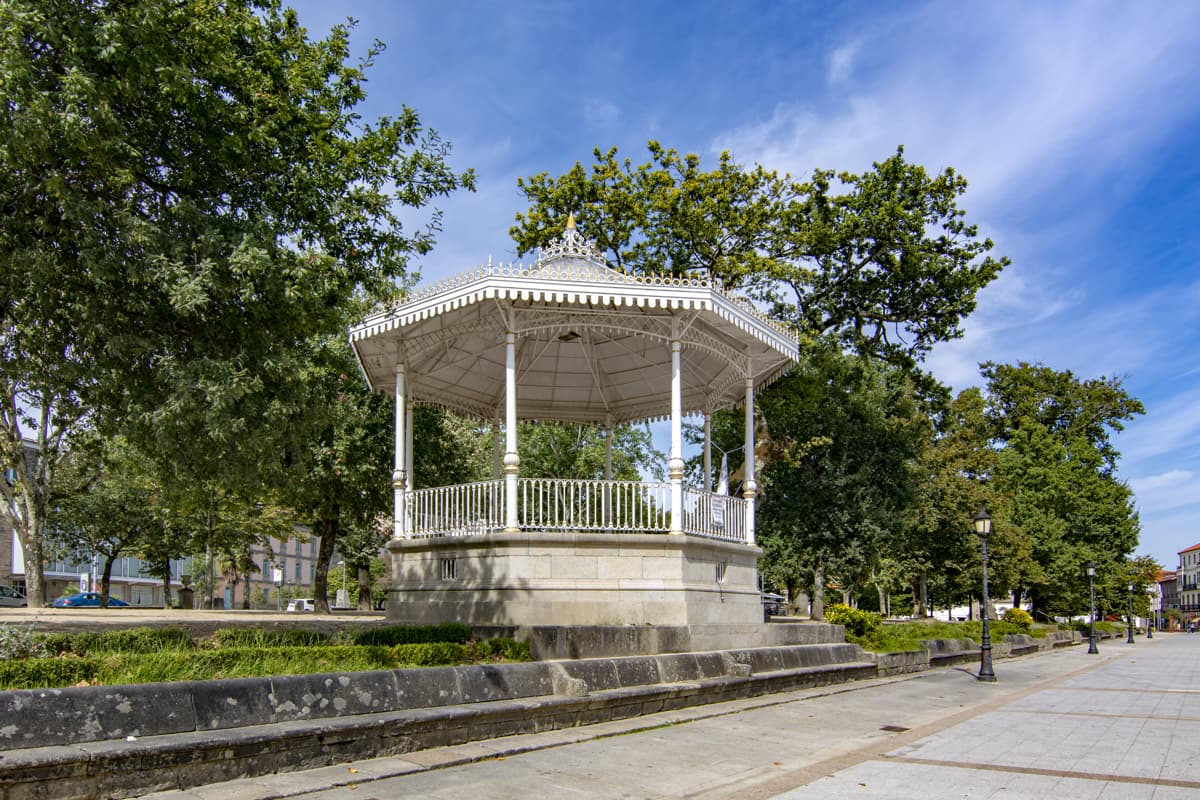
At its main end, stands an imposing monument that pays tribute to the heroes of Pontesampaio, commemorating the centenary of the French. At the opposite end, there is the so-called Cross of the Fallen, a sculpture in the form of a cross in honor of the soldiers.
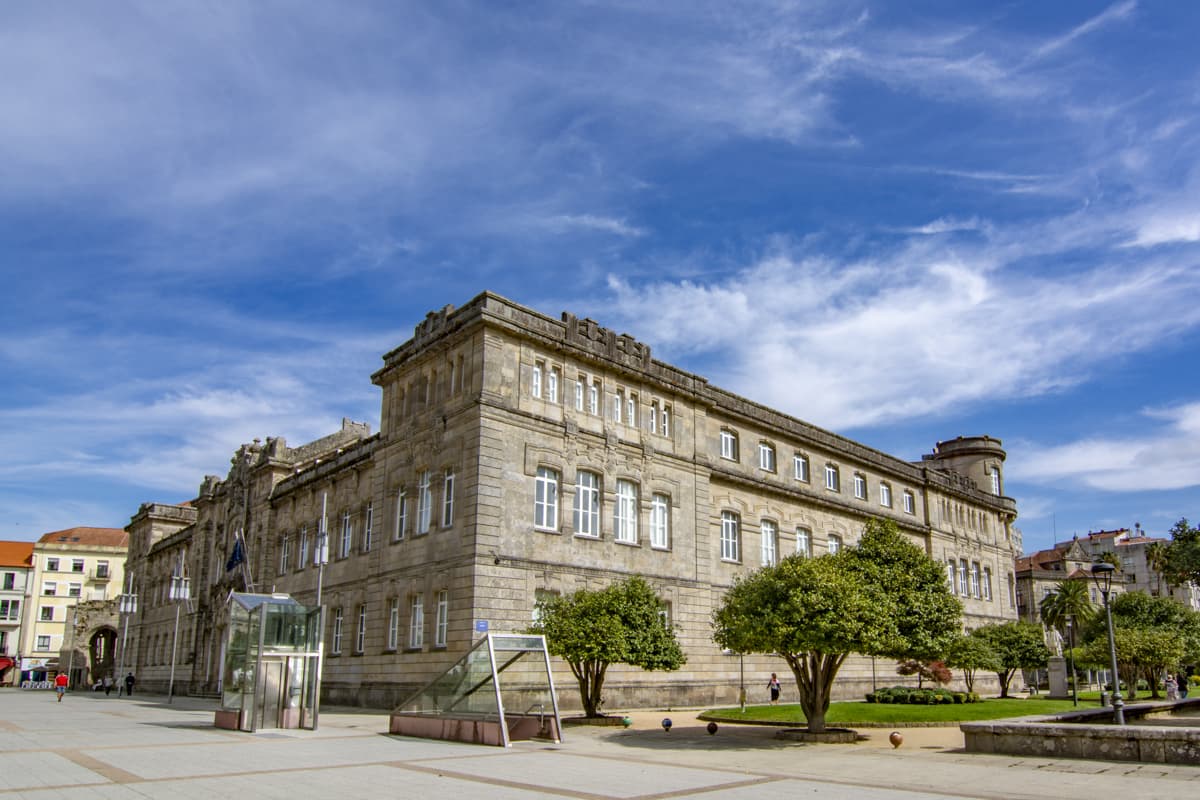
illa das esculturas
The Illa das Esculturas, also known as Illa do Covo, is one of the most representative landscapes of the city. It is a natural landscape, located on the banks of the Lérez River, which houses a series of sculptures scattered around the site as part of an artistic project carried out in 1999. It also has paths and bike lanes, making it an ideal place to stop by and relax. It is one of the largest open-air contemporary art museums in Galicia.
the viewpoint of monte porreiro
The Mirador de Monte Porreiro, located in the Monte Porreiro neighborhood, is a large natural park ideal for disconnecting from the hustle and bustle of the city. It is located on the former estate of Casimiro Gómez, an indiano who brought prosperity to Pontevedra at the beginning of the 20th century and was the owner of the now disappeared Balneario del Lérez.
The site has tables, numerous parks, restrooms, benches and vegetable gardens. But its main attraction is the viewpoint, which gives it its name, and from which you can see wonderful views of the Pontevedra estuary.
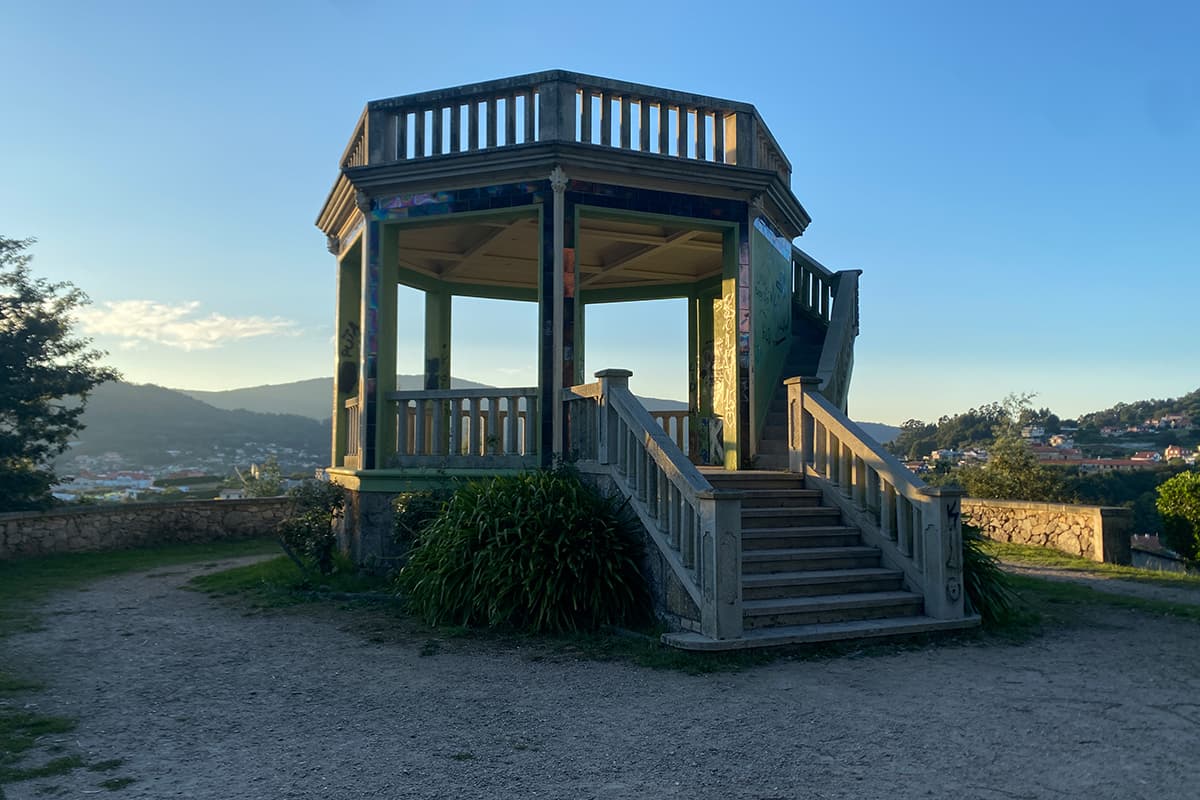
gastronomy and leisure
Pontevedra is an outstanding gastronomic destination in Galicia. Its restaurants offer everything from fresh seafood and empanadas, to octopus, fish and quality meat. In addition to serving wines from the Rías Baixas Denomination of Origin, such as the well-known albariños.

events and festivals
The most famous festivities of the city are the Festivities of the Virgen de la Peregrina, the Feira Franca and the Entroido and burial of the Ravachol.
Virgen de la Peregrina Festivities
They begin during the second Saturday of August and are celebrated for a week in honor of the patron saint of the province. The Alameda and Reina Victoria Avenue are filled with stalls, attractions, concerts and shows that bring music and fun to the streets of the city.
Among the events it hosts, highlights include the battle of flowers, the procession of the Virgin or the fireworks displays that open and close the big week of Pontevedra.
Free Trade Fair
One of the city’s oldest traditions is the famous Feira Franca, which attracts tourists and locals alike. It is a medieval fair held the first weekend of September, which recalls and celebrates the privilege granted by King Henry IV of Castile in 1467 to hold a tax-free market.
During this day, Pontevedra is completely disguised and transported to the Middle Ages, decorating all its streets to host numerous lunches and dinners, shows, children’s attractions or craft stalls. Citizens are no less and also take to the streets in costume to celebrate.
But, the highlight of the Feira Franca is the medieval joust. A recreation of a medieval tournament that takes place in the city’s Plaza de Toros and can be attended by everyone free of charge to cheer on their favorite knight.
entroido festival
The city has a long tradition of celebrating Carnival or Entroido since the 19th century. The arrival of the Civil War and the subsequent dictatorship eliminated these festivities, but the citizens found a way to prevent their disappearance. Pontevedra had many veteran societies and entities, made up of noble families who were always linked to the Entroido and who were not going to allow it to fade away. For that reason, under the name of Fiesta de la Camelia, they celebrated in halls, hotels and other places different dances and parties.
In the 1980s, the inhabitants recovered the street carnival, which continues to be celebrated to this day in style.
burial of the parrot ravachol
Pontevedra has a great tradition. One of its most told stories is that of the parrot Ravachol, the mascot of Don Perfecto Feijóo, a pharmacist who had his establishment in the Plaza de la Peregrina. Many citizens went to the place every day and met this friendly parrot, who always warned when a customer came in. It is even said that he could tell when someone was from the city or from outside.
Ravachol was so beloved that, when he died, a mass funeral was organized to express condolences. Since 1985, the carnival festivities are closed with the burning of a figure of this parrot as a burial, in which all the inhabitants dress in black. In addition, this figure disguises himself each year to claim a specific theme. For example, in 2023, he dressed as a sanitarian to support public health care.
News
Mercado da Estrela returns to highlight local talent
The traditional Mercado da Estrela will once again turn Santiago de Compostela into a meeting point for the celebration of Galician talent, crafts and local commerce. It will take place this weekend, from December 13 to 15.
What to do in Santiago this December
This 2024 is about to come to an end. To celebrate it, we bring you a list of plans and other activities so you know what to do in Santiago de Compostela during the month of December.
The Apalpador, the Galician Santa Claus
When you think of Christmas, the first thing that usually comes to mind is the figure of Santa Claus or the Three Wise Men, fantastic characters that bring joy and illusion to the little ones. But many territories have their own icons, as is the case of the Apalpador.


